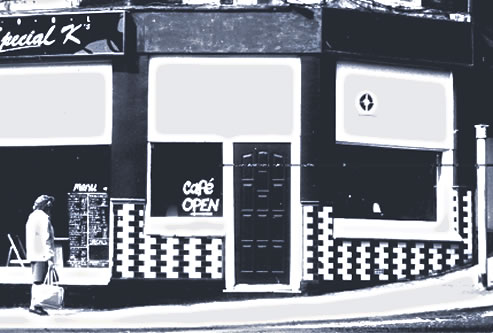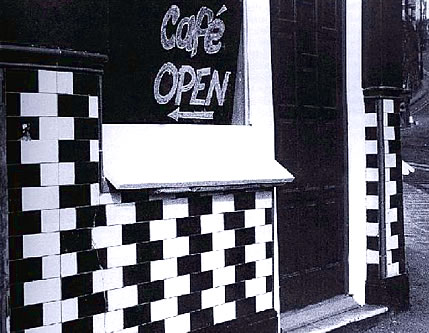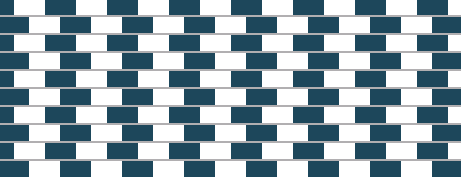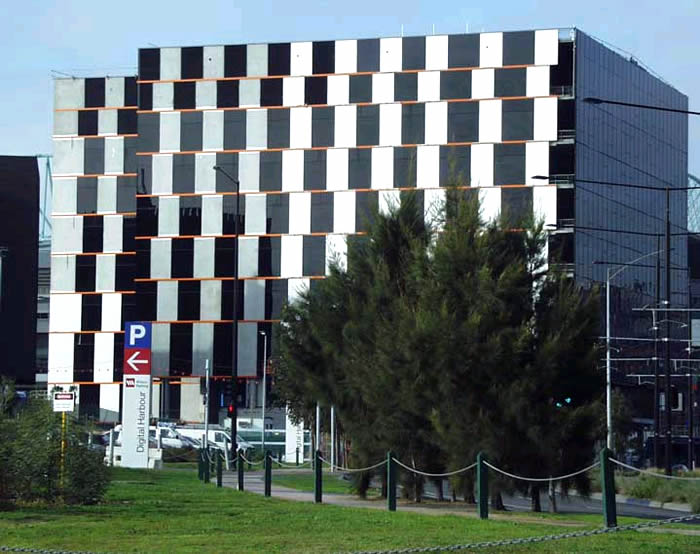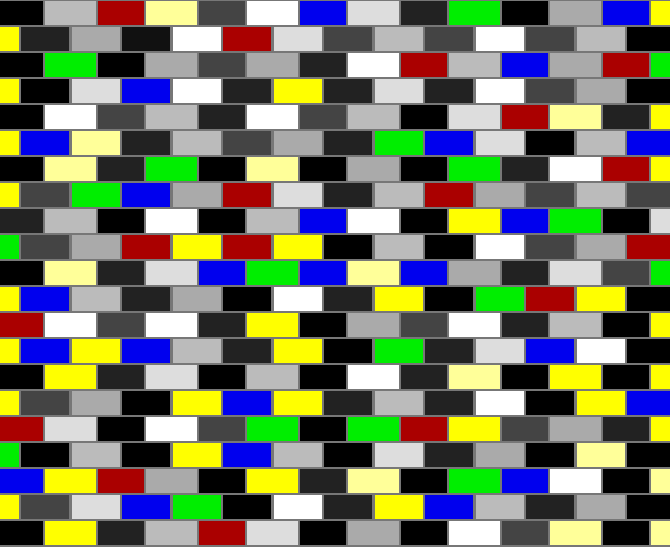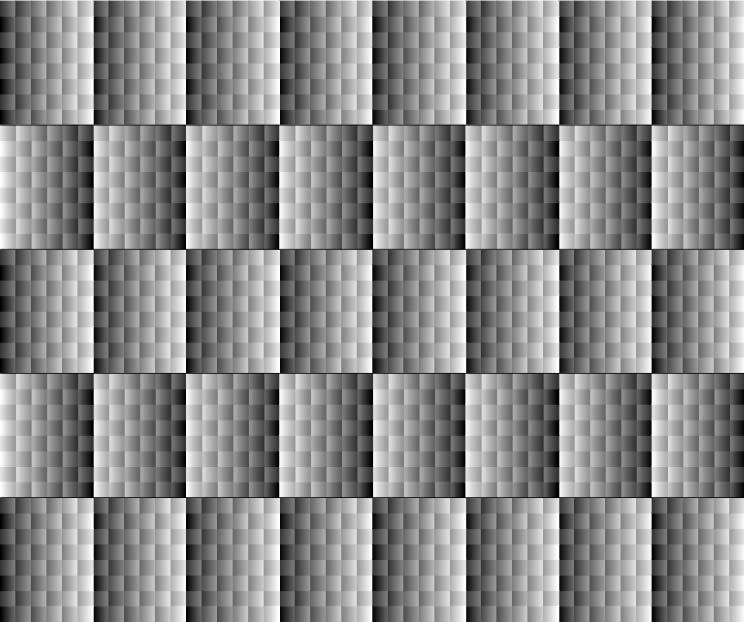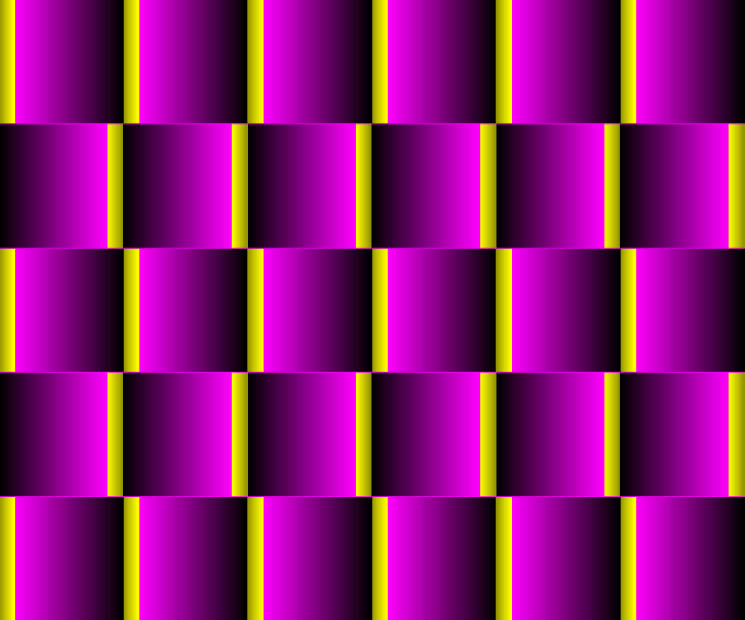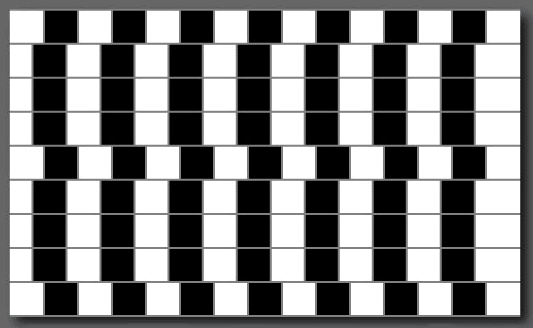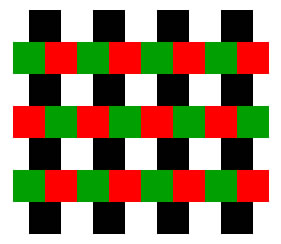| |
|
| Cafe
Wall optical illusion |
| |
Description
This
illusion is created when offset rows of alternating dark and
light tiles are surrounded by a visible line of mortar. Ideally,
the mortar is a shade somewhere between the two tile colors.
When the tiles are offset by half a tile width, the horizontal
lines appear to slant diagonally, creating the appearance
of wedges. The illusionary effect is affected by both the
position of the tiles as well as the thickness and color of
the grout in between them. If grout lines are removed, there
is no longer any illusion of diagonal lines.
Explanation
of the Cafe wall illusion
Diagonal
lines are perceived because of the way neurons in the brain
interact. Different types of neurons react to the perception
of dark and light colors, and because of the placement of
the dark and light tiles, different parts of the grout lines
are dimmed or brightened in the retina. Where there is a brightness
contrast across the grout line, a small scale asymmetry occurs
whereby half the dark and light tiles move toward each other
forming small wedges. These little wedges are then integrated
into long wedges with the brain interpreting the grout line
as a sloping line. |
|
|
|
The
blue line appears tilted to the left and down, and even curved,
although, in fact, it is strictly horizontal. |
|
| |
Richard
Langton Gregory (24 July 1923 – 17 May 2010),
British psychologist
and Emeritus Professor of Neuropsychology at the University of Bristol.
In 1979, Dr. Richard Gregory noticed this curious effect on the wall of
a cafe in Bristol. Hence the name of illusion.
While on the way to work one day, a member of Gregory's lab in Bristol,
England noticed that the front of a local cafe had been adorned
with black and white ceramic tiles. The mortar between adjacent rows of
tiles was visually apparent, and the black/white pattern was offset by half
a tile width in alternating rows.
|
|
| Detail
of the wall
|
|
|
Digital
Harbour Port 1010 building, Docklands, Melbourne
Photo: Chris Lusby Taylor |
| |
|
|
| |
"The
Shonan-shinjuku lines"
Although
red squares and green ones are aligned, they sometimes appear to
be misaligned.
The direction of misalignment can be reversed by seeing the figure
through the periphery of glasses if you wear them
Copyright A.Kitaoka
2003 |
|
|
VARIANTS
APPLICATION OF THE CAFE WALL ILLUSION
in the interpretation of Akioshi Kitaoka
©
Akiyoshi Kitaoka |
|
In
these figures all horizontal lines are parallel!
|
|
|
| |
|
|
| |
| |
Illusions
REFERENCES:
• Fraser,
J. (1908) A new illusion of visual direction. British Journal of Psychology,
2, 307-320.
• Gregory
RL & Heard P (1979) Border locking and the Cafe Wall illusion.
Perception 8:365–380
• Lulich DP & Stevens KA (1989) Differential contributions
of circular and elongated spatial filters to the Cafe Wall illusion.
Biol Cybernetics 61:427–435
• Woodhouse, J. M. and Taylor, S. P. (1987) Further studies
of the Cafe Wall and Hollow Squares illusions. Perception, 16, 467-471.
• Anstis, S. and C. Tyler, (1980) "Induced tilt from
checkerboards: Edges vs. Fourier components," Investigative Ophthalmology
and Visual Science, 19, 165. |
|
|
| |
|
| |
|
| |
|
|
|
Copyright
© 2004 ABC-people.com
Design and conception BeStudio © 2016-2017 |
|
|
|
